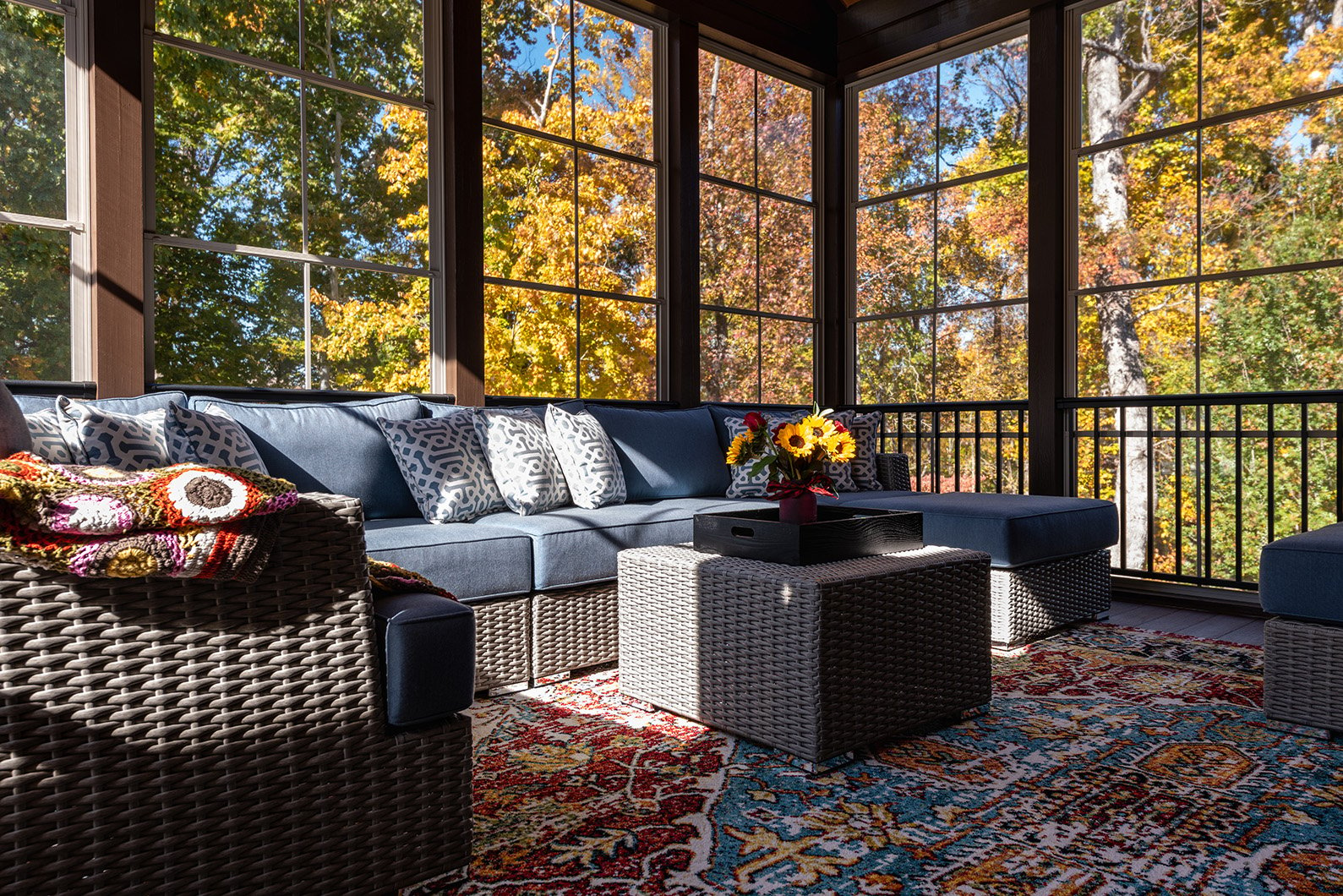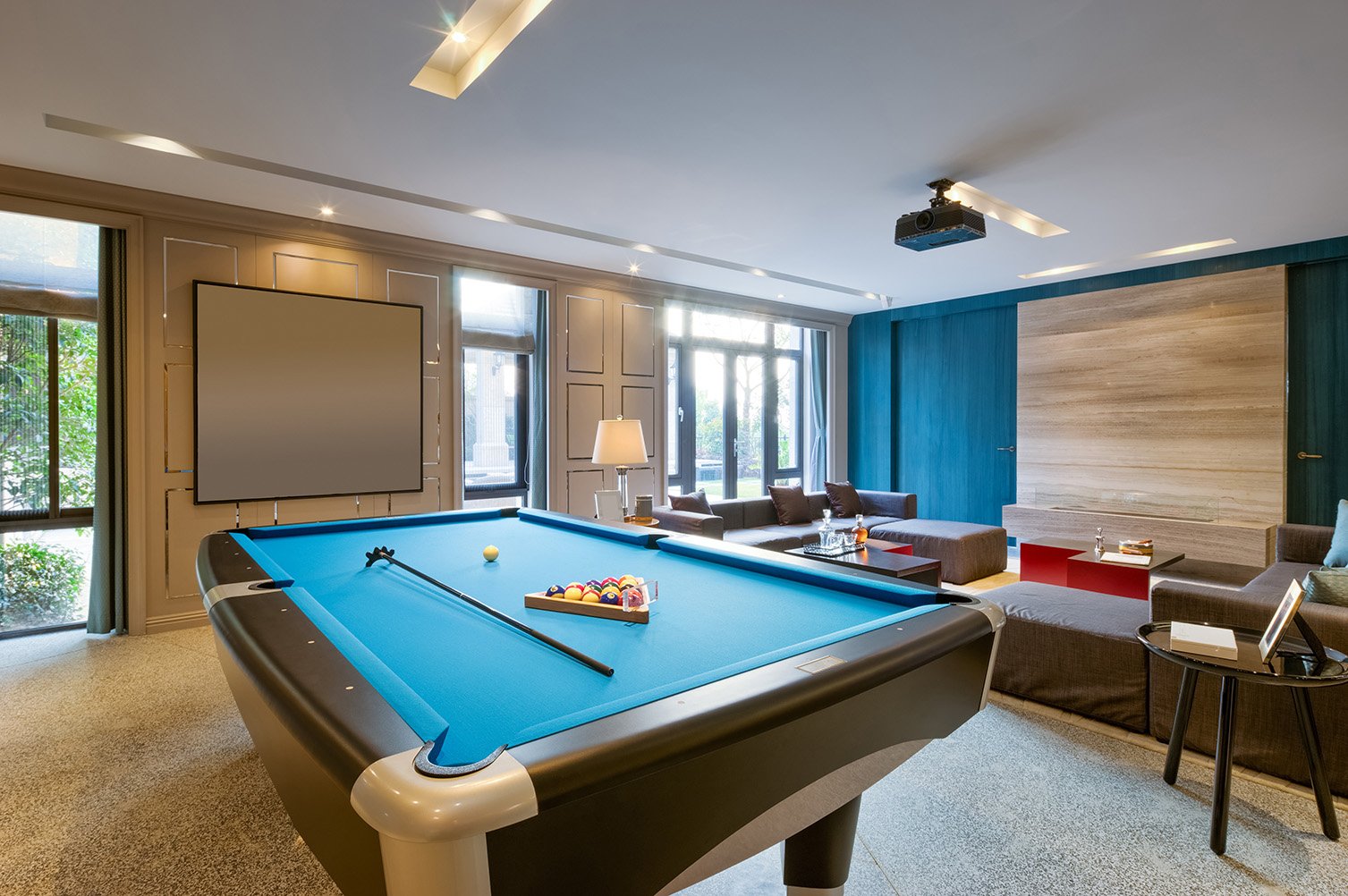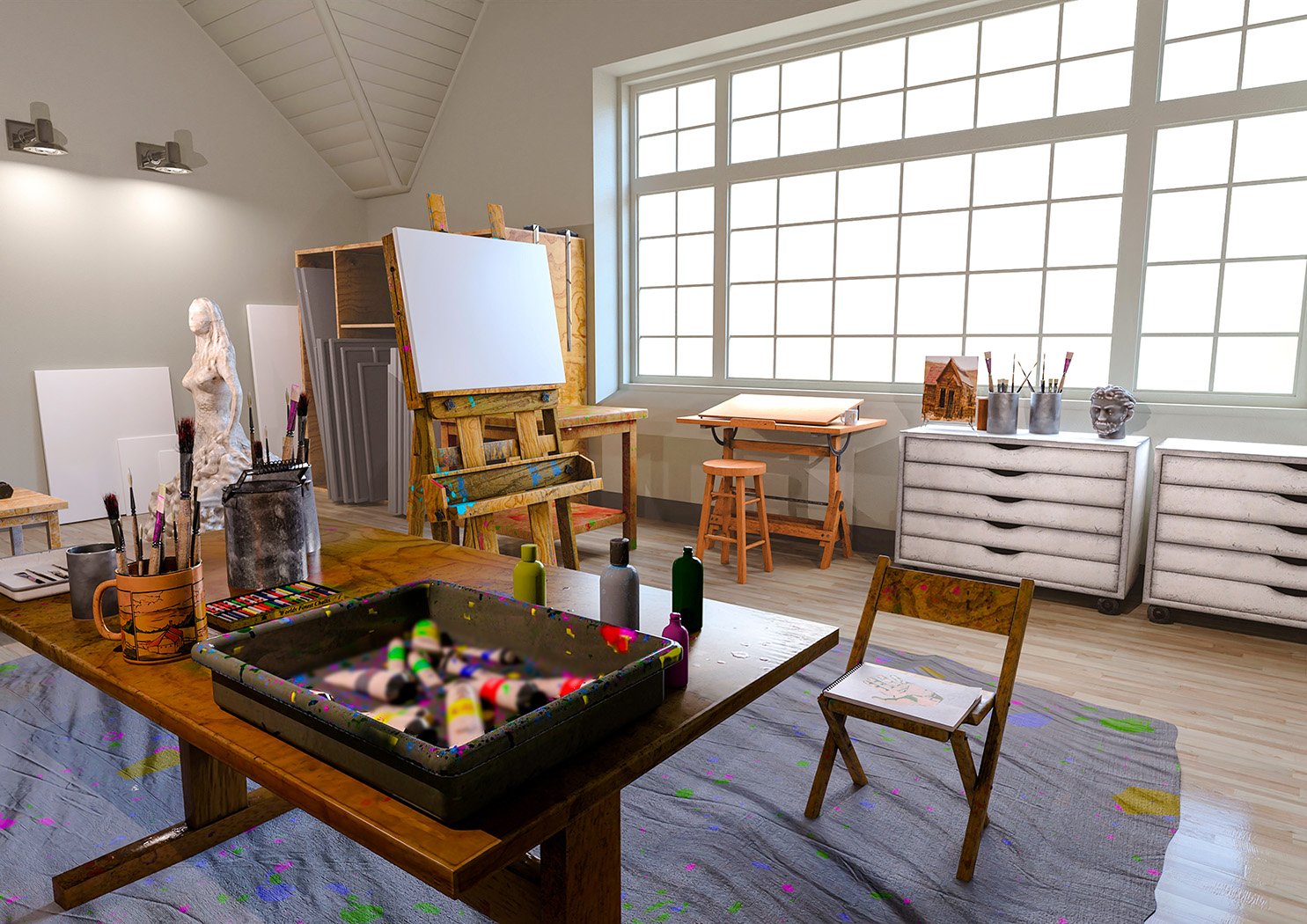If you've got room to spare, elevate that extra space. With thoughtful touches, you can make it a place where you and your family love to spend time. We talked to two local designers to get their expertise on creating covetable bonus rooms like libraries, sunrooms, man caves and more.


Bring on the Books
Keep your favorite reads on display and within easy reach by creating your own library. You can repurpose a formal living room or an unused guest room and convert it to showcase your beloved book collection. “Consider bookshelves in a variety of heights,” advises Monique Becker, president and owner of Becker Home. “You can build around windows (above and below) to make the most use of available space. Don’t forget to add inspirational artwork to wall areas where shelving won’t fit.” If you’ve got an extensive book collection, make the most of your wall space from floor to ceiling. “Consider adding a rolling shelf ladder to reach the highest shelves,” Becker says.
In addition to books and bookshelves, be sure to add features to make the room enticing for your family. “Excellent lighting and comfortable seating are crucial to any library,” asserts Melinda O’Neill, president of Empire Home Center. “There should be multiple types of lighting so reading can be accessible anywhere in the room and at any time of the day. A structured arm chair or two is also a must to ensure reading bliss.”
Since readers’ needs and preferences can change over time, think of your library as an ever-evolving space and curate your books and décor to meet the changing needs of your family. If you have younger children, you may want a shorter bookcase or bins that keep books easy to access and see at a glance.
“It is really important to keep the library room open, bright and airy. I highly recommend decluttering your space to avoid making the library look too busy,” adds O’Neill. “I also love the look of a single bookcase on one full wall that is the eye-catching focal point.”


Let the Outside In
Savor the beauty of nature year-round with a sunroom. Maximize the amount of natural light with plenty of windows and skylights. These versatile rooms can be used for entertaining, as a family hang out or even as a home office with an impressive view. In addition, if you have a passion for plants, sunrooms can be the ideal spot to make sure all your greenery is getting optimal light.
Since all this light can also bring an abundance of heat, consider some options to keep your sunroom at a consistent temperature. Even if your home’s HVAC system is connected to your sunroom, you may want to use a few additional strategies for comfort. “Make sure to incorporate solar shades to reduce sun glare and fading during the hottest part of the day,” Becker suggests. “Don’t forget the importance of a ceiling fan for added air circulation.”
When choosing décor for your sunroom, let your love of color have creative control. “Think bold prints in a variety of colors, layered fabrics, loads of plants, cheery colored couches and unique end tables to make it the coziest room in the house,” O’Neill recommends.
If your sunroom is mainly a space for relaxing and family time, “make sure to use an easily cleanable flooring or an area rug that can withstand high traffic,” says Becker. These types of flooring can also make the space pet-friendly, so you and your furry family members can sit back and enjoy each other’s company.
To make your sunroom extra welcoming, be sure to add in lots of texture and eye-catching artwork. “Bold and bright art work that complements a cheery couch is the best addition to brighten up the sunniest room in your home,” advises O’Neill. “Layer soft throws and pillows over the couch as well for a look that is both chic and inviting.”


Express your Individuality
Man caves are a personal space, and they’re often distinguished by a specific theme that celebrates the owner’s interests, like a favorite sports team, a salute to pop culture fandom or a sanctuary for hobbies. The term was first used in the 1992 book Men are From Mars, Women are from Venus.
Although cave is in the name, it doesn’t mean your space has to be dark and dim. “Don’t forget the importance of lighting,” says Becker. “Overhead lighting is necessary, but so is task lighting such as a chandelier for game tables and table lamps when you don’t want to use bright overhead light.”
According to O’Neill, man caves have changed a lot in the last 30 years. “Man caves have evolved into much more than what they used to be — a dingy garage or a leftover basement area. You can use sleek lighting, creative shelving, wall boards and flooring to elevate the hangout spot while a bar and gaming tables can provide activities for family and friends.”
In addition to spots for group activities, you may also want to incorporate your favorite collectibles in a curated display. “Shelving and interesting wall boards can make the entire space look more masculine while simultaneously displaying all of your hard-earned awards and memories,” O’Neill adds. Whatever theme you choose for your man cave, the main idea is to create a space that reflects your personality and brings you joy.


Outdoor Oasis
Similar in intent to man caves, she sheds are outbuildings custom-tailored to suit the owner’s personality and style. While it might feel like she sheds are a more recent innovation, back in Victorian times, women used summerhouses as their personal retreats, just like the she sheds of today.
Since she sheds are essentially a blank canvas, take time to think about your goals for the space and what constitutes your idea of a dream she shed. “Design for the main use and focus on the items you will need to make the area the most functional for your needs,” suggests Becker. “Ask yourself WHY you’re creating the space to prioritize your needs.”
She sheds can be upscale creations, or they can be much simpler. It all depends on your vision.
“I love to see she sheds that have a great entrance,” O’Neill says. “You can easily make the she shed cozy right off the start with small details like a wreath on the door, a doormat or a colorful planter.” If you’re looking for a quiet, contemplative space, start with “a comfortable chair and ottoman with a lamp for reading,” notes Becker. “Add a basket for books and you have a complete, cozy nook.”
She sheds can also function as office space or guest space. “A day bed or futon can quickly transition from a seating to a sleeping area when extra space is needed,” O’Neill suggests. While she sheds are external features, “my favorite she sheds are ones that have a cohesive look with the main home,” says O’Neill. “You can create this look by matching the siding, trim colors, light fixtures and landscaping with the main exterior of your house.” To extend the space even further, “add a small table and chairs outside the front for more seating and to provide a warm, welcoming feel,” she says.



Creativity Central
Whether your passion is painting, knitting, sculpting, sewing, scrapbooking or another creative pursuit, keep your materials close at hand with a dedicated maker space. Before you jump in and start putting an arts and crafts room together, make sure you think ahead and consider your specific needs.
“Complete a scale floor plan before you tackle this project to make sure you are incorporating enough work space and can fit all of the furniture you will need,” advises Becker.
While you’re in the development stage, think about what kind of lighting you need for your hobbies of choice. You may want to take advantage of the room’s natural light and supplement with task lighting. A lamp that provides daylight lighting can reduce eyestrain and accurately reproduce colors, which is ideal when you’re selecting paint hues or a particular color of fabric or yarn.
Design your arts and crafts room so you can focus on fun. “Easy-to-clean and stain-resistant flooring is a must, as are multiple surfaces such as cork boards, white boards and chalk boards to easily display activities,” notes O’Neill.
One of the biggest advantages of a special art/crafting space is that you can leave a project set up until you’ve finished working on it. “Lots of storage for bits and bobs is nice, but it defeats the purpose of the room if you don’t have an area to spread out and work,” Becker says. To maximize this project space, “incorporate plenty of flat work surfaces,” she adds. This could take the form of a table, desk or even a counter that wraps around the room’s perimeter.
Even though some artistic endeavors require more materials and equipment than others, make sure your finished space has dedicated zones for storage and working. “An island of any size in the middle of the room will help tremendously,” O’Neill recommends. An island can also do double duty for storage and work space. To make it easier to access your supplies, “design the island with as many drawers for organization as possible,” O’Neill adds. To accentuate both your storage and working space, Becker suggests going vertical with wall storage, and O’Neill advises using built-in shelves to keep everything neatly corralled.
Sources
Becker Home
31 E. Philadelphia Avenue, Boyertown
484.300.9019 | becker-home.com
Empire Home Center
2741 Bernville Rd., Leesport
610.926.0500
641 Penn Avenue, West Reading
610.484.3700 | empiresurplus.com















